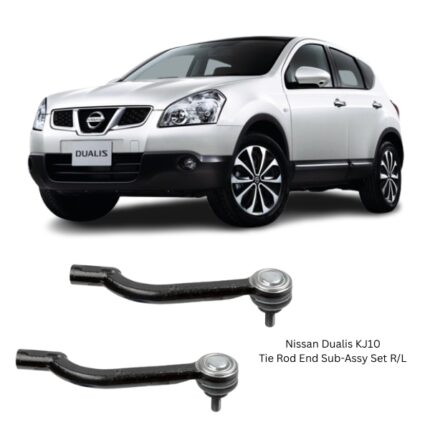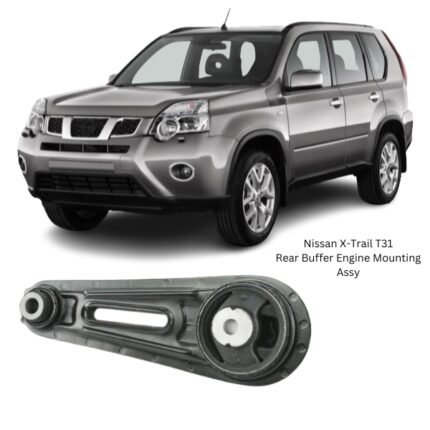Get Subaru Legacy Outback BP9 Inner Drive Shaft Boot 28323-AG010 in Kenya
The Inner Drive Shaft Boot, also known as the CV Joint Boot (Inner), is a vital protective component of a vehicle’s drivetrain system. Its primary role is to encase and protect the constant velocity (CV) joint located on the inner side of the drive shaft, closest to the transmission or transaxle. By shielding the CV joint from contaminants and retaining lubricating grease, the inner drive shaft boot ensures smooth, efficient, and noise-free operation of the drive system.
Though small in size, the inner boot plays a crucial role in the longevity and functionality of the entire drivetrain. Damage or failure of this component can lead to joint degradation, compromised performance, and ultimately, costly repairs if not addressed promptly.
Design and Construction
The inner drive shaft boot is engineered to meet high durability standards and endure the demanding conditions of the drivetrain. It is designed with a flexible bellows structure that accommodates joint articulation and shaft movement.
Key Components and Structure
-
Boot Body (Bellows Section)
-
Constructed from durable, high-elasticity rubber or thermoplastic materials such as neoprene, EPDM (Ethylene Propylene Diene Monomer), or thermoplastic elastomer (TPE).
-
Features accordion-like folds that expand and contract to accommodate axial and radial movement of the CV joint.
-
Designed to resist cracking, tearing, and hardening due to temperature fluctuations and exposure to road elements.
-
-
Large and Small Mounting Ends
-
The larger opening fits securely around the CV joint housing or transaxle side.
-
The smaller end attaches tightly to the drive shaft or axle shaft.
-
Both ends are secured using stainless steel boot clamps or spring bands to ensure a tight seal and prevent grease leakage.
-
-
Grease Reservoir (Internal)
-
The interior of the boot is pre-packed with high-performance CV joint grease, which ensures continuous lubrication of the inner CV joint during operation.
-
Function and Importance
The primary function of the inner drive shaft boot is protection and lubrication of the CV joint. Without it, the CV joint would be exposed to dust, dirt, road salt, water, and other contaminants, leading to rapid deterioration.
Key Roles Include:
-
Sealing Grease Inside: The boot keeps the CV joint packed with lubricating grease, preventing it from drying out and wearing prematurely.
-
Blocking Contaminants: It acts as a barrier to external elements that could cause rust, scoring, or joint seizure.
-
Flexibility During Movement: As the vehicle accelerates, decelerates, and turns, the boot flexes with the CV joint, maintaining a consistent protective cover.
-
Noise Dampening: A well-lubricated joint with a properly sealed boot operates quietly, reducing noise and vibration during driving.
Common Materials Used
Given the operating environment of the drivetrain, the boot is made from materials resistant to heat, oil, UV rays, and environmental degradation:
-
Neoprene Rubber: Common in OEM applications for its balance of flexibility, temperature resistance, and durability.
-
EPDM: Resistant to ozone, weather, and high heat, ideal for long-term use in harsh conditions.
-
Thermoplastic Elastomers (TPE): Offers manufacturing flexibility and can be precision-molded, though may have slightly lower wear resistance compared to rubber in some applications.
All materials are chosen to allow repeated flexing without cracking, even in extreme temperatures or high-load conditions.
Installation and Fitment
The inner CV boot is specifically designed to fit over the inner CV joint and the axle shaft. Its installation must be precise to maintain a proper seal and ensure correct operation of the drivetrain system.
General Installation Steps:
-
Vehicle Lift and Disassembly:
-
Lift the vehicle safely and remove the axle shaft to access the inner CV joint.
-
-
Cleaning and Inspection:
-
Inspect the joint for wear or damage; clean thoroughly before installing a new boot.
-
-
Grease Application:
-
Apply high-temperature CV joint grease inside the boot and onto the joint components.
-
-
Boot Fitting:
-
Slide the new boot into place, ensuring the large and small ends fit snugly on their respective grooves.
-
-
Clamp Securing:
-
Fasten the boot clamps securely, ensuring no movement or slippage.
-
-
Reassembly and Test:
-
Reinstall the axle and related suspension components, then test for any noise or leaks.
-
Professional installation or close adherence to vehicle-specific instructions is recommended to ensure long-term reliability and performance.
Signs of a Failing Inner Drive Shaft Boot
The boot is subject to high mechanical stress, extreme temperatures, and debris exposure, making it susceptible to wear and tear. Recognizing early signs of failure can prevent CV joint damage:
-
Visible Cracks or Splits: Dry, cracked rubber or visible holes indicate impending failure.
-
Grease Leaks: Dark or shiny grease splattered near the inner side of the wheel well or undercarriage often signals boot damage.
-
Clicking or Popping Sounds: These may arise during turns or acceleration if the CV joint is running dry or contaminated due to boot failure.
-
Vibration Under Load: A damaged CV joint may cause abnormal vibrations, especially under acceleration.
Early detection and prompt replacement of the boot can extend the life of the CV joint and prevent more expensive repairs.
Maintenance Tips
While modern inner drive shaft boots are designed to be maintenance-free, visual inspection during routine service intervals is highly recommended. Simple checks include:
-
Look for tears or pinholes on the boot surface.
-
Inspect the boot clamps for looseness, rust, or signs of leakage.
-
Monitor for grease splatter around the axle or under the car.
-
Check during suspension or brake service, as the axle is often exposed during these repairs.
Advantages of Quality Inner Drive Shaft Boots
Using a high-quality inner CV boot ensures:
-
Longevity of the CV joint and axle assembly.
-
Protection against premature joint failure due to contamination or loss of grease.
-
Quiet, Smooth Operation of the drivetrain.
-
Reduced Maintenance Costs by preventing complete axle replacement.
-
Perfect Fitment for fast, accurate installation without modifications.
Premium boots are designed to meet or exceed OEM standards, offering better sealing, greater flexibility, and improved grease retention.
Follow us on Facebook for more parts.





Reviews
Clear filtersThere are no reviews yet.